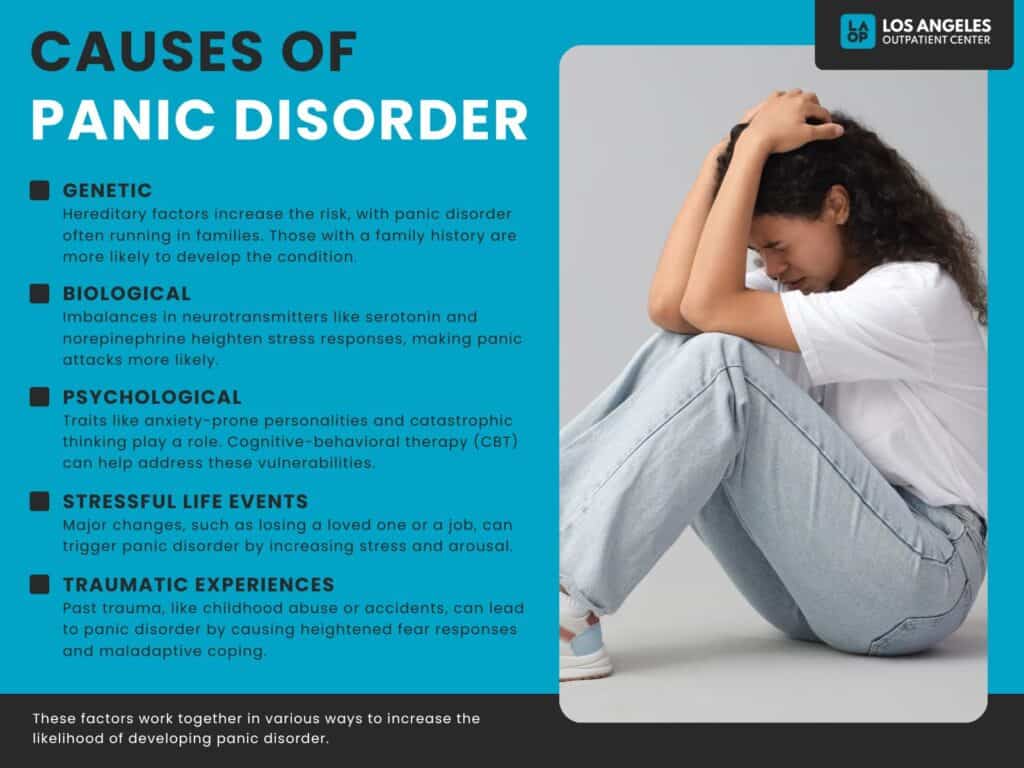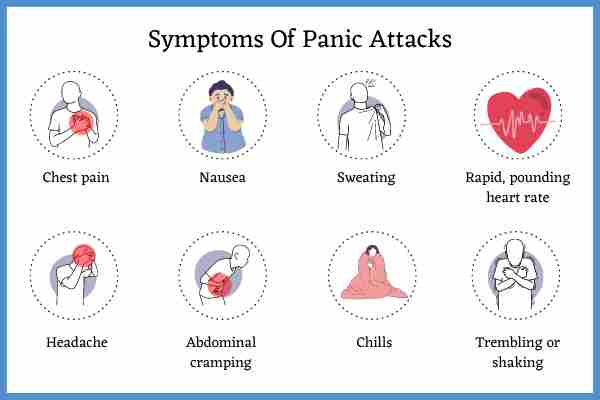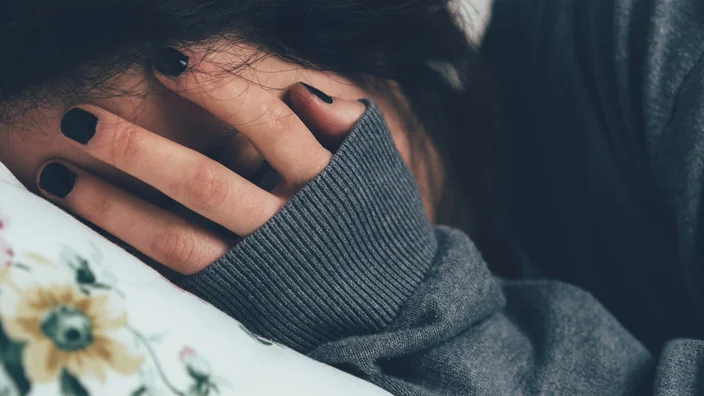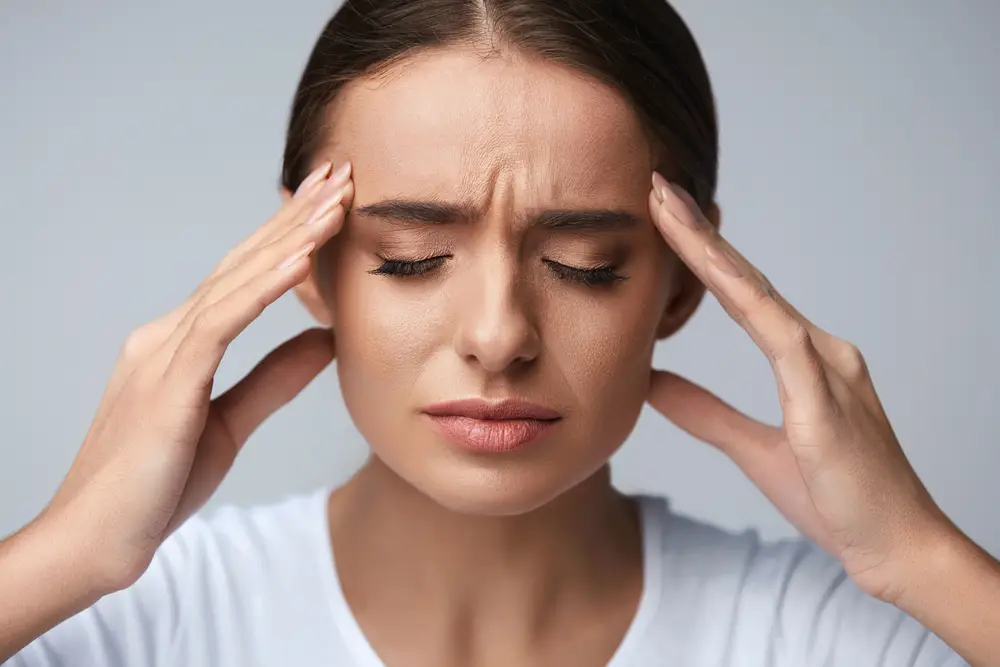A panic attack causes sudden, temporary feelings of fear and strong physical reactions in response to ordinary, nonthreatening situations. When you’re having a panic attack, you may sweat a lot, have difficulty breathing and feel like your heart’s racing. It may feel like you’re having a heart attack.A panic attack causes sudden, temporary feelings of fear and strong physical reactions in response to ordinary, nonthreatening situations. When you’re having a panic attack, you may sweat a lot, have difficulty breathing and feel like your heart’s racing. It may feel like you’re having a heart attack.
Panic attacks are the main feature of panic disorder. But they can happen alongside other conditions, such as:
- Anxiety disorders.
- Mood disorders.
- Phobias.
- Psychotic disorders.
- Substance use disorders.
- Trauma- and stressor-related disorders.
- Certain medical conditions.
While panic attacks by themselves aren’t dangerous or harmful to your health, frequent attacks can lead to a decrease in your quality of life and other issues.Panic disorder is an anxiety disorder that involves multiple unexpected panic attacks. A main feature of panic disorder is that the attacks usually happen without warning and aren’t due to another mental health or physical condition. There’s often not a specific trigger for them.
Not everyone who experiences a panic attack develops panic disorder.
:max_bytes(150000):strip_icc()/top-symptoms-of-panic-attacks-2584270_FINAL-5bcdfd4d46e0fb0051228ee5.png)
Difference between Panic Attack and Anxiety Attack:
The main difference is that certain stressors often trigger anxiety attacks, and they may build up gradually. In contrast, panic attacks typically happen unexpectedly and suddenly.
Anxiety often causes physical symptoms, such as a racing heart or knots in your stomach. But these symptoms are generally less intense and last longer than a panic attack, which has very intense but brief symptoms.
Causes of panic attack:
The exact cause of panic disorder is unknown, but it’s thought to be a combination of biological, psychological, and environmental factors:
- Genetics: Panic disorder can run in families, but it’s not clear why some family members have it and others don’t.
- Brain chemistry: An imbalance of neurotransmitters in the brain may be a factor.
- Stressful life events: Major life stressors, such as the death of a loved one, a traumatic event, or a divorce, can increase the risk of developing panic disorder.
- Substances: Consuming alcohol, caffeine, or other stimulants can increase the risk of panic attacks.
- Other medical conditions: Other medical or psychiatric problems may be a factor.

Symptoms of panic disorder:
Symptoms of panic disorder include:
Panic attacks:
Sudden and repeated episodes of intense fear and anxiety that can occur without warning or obvious reason.
Physical symptoms
During a panic attack, you might experience:
- A racing heartbeat
- Sweating or chills
- Trembling or shaking
- Difficulty breathing
- Weakness or dizziness
- Tingly or numb hands
- Chest pain
- Stomach pain or nausea
Fear:
You might feel a fear of death or impending doom, or a fear of losing control.
Anxiety
You might have an intense worry about having another panic attack.
Avoidance
You might avoid places or situations where you’ve had panic attacks in the past.
Distorted thinking
You might have a dysfunctional cycle of thinking that can lead to anxiety or panic.
A healthcare professional can diagnose panic disorder based on your symptoms.

Treatment of panic disorder:
Panic disorder is treated with a combination of psychological and pharmacological interventions, and sometimes a healthy lifestyle:
1. Psychotherapy
Also known as talk therapy, psychotherapy is often the first choice of treatment. It can help you understand and cope with panic attacks and disorder. A type of psychotherapy called cognitive behavioral therapy (CBT) can help you learn that panic symptoms aren’t dangerous.
2. Medication:
Medications that can help with panic disorder include:
- Antidepressants, such as selective serotonin reuptake inhibitors (SSRIs) and serotonin-norepinephrine reuptake inhibitors (SNRIs)
- Beta-blockers
- Anti-anxiety medications, such as benzodiazepines
Healthy lifestyle
Getting enough sleep and exercise, eating a healthy diet, and turning to family and friends for support can help.
Breathing training
Techniques that reduce hyperventilation can help with panic symptoms.
Support groups
Joining a support group can provide strength and encouragement from others who face similar challenges.
The treatment you receive depends on the severity of your symptoms, how long you’ve been having them, and how much they impact your daily life. You may need to take medication and undergo psychotherapy, or just one or the other.
:max_bytes(150000):strip_icc()/anti-anxiety-medications-2330663-61aca5a651df4ac0a41a1cdf81c7d2db.jpg)




